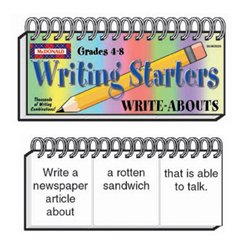 Do you have any of those mix-and-match books that let you remix parts of their pages? (It's ok; you can claim they're for your kids.) We once bought a story starter for my son (see, like that) that combines an opening quote, a character, and a situation. Put together a random grouping, and you have the beginning of a story.
Do you have any of those mix-and-match books that let you remix parts of their pages? (It's ok; you can claim they're for your kids.) We once bought a story starter for my son (see, like that) that combines an opening quote, a character, and a situation. Put together a random grouping, and you have the beginning of a story.
That's sort of how I look at data and analytical methods.
Here's how it works: First, remember the basic building blocks of social media analysis: data, analytics, and application. Now, let's generalize from the social media example, because this isn't just about social media data.
We get three basic pieces:
- Data
Internal and external sources, open (freely accessible) and proprietary (paid). There's a lot more here than most discussions get into. - Analytic methods
Sentiment analysis, topic clustering, source profiling, statistical analysis, geospatial analysis—the list goes on and on. This is a good area for And not Or thinking. - Applications
In a software business, this usually refers to the product, its features and their benefits. Here, though, think about the work that can be enabled through the application of data and analytics. Think about functional roles and what they need to do, and then you may get ideas about what a software application should do.
We tend to get stuck in familiar modes of operation, thinking that a certain type of data implies a certain type of analysis, which is useful for a certain application. We fall back on social media + sentiment analysis + marketing. You might even think of it as a chemical reaction: social media + sentiment analysis -> value for marketing.
It's comfortable. It's familiar. It's not wrong. But there's more.
Time to mix it up
To find more value in the data and analytics, we need to start flipping the pages in the book. Which analytic methods could make this source of data useful for that function? I know what I know. What have I not yet found?
You can start with any piece first, and switching the order aids discovery. You might start with a functional role and ask what information would help them. You might start with a data source and think about how it might be useful. Or you could ask how an analytic method might turn data into something meaningful.
The secret is that each category has more options than you're probably using. More sources of data, inside and outside your organization. More analytic methods—some still being invented. More functional roles than the ones you're used to supporting.
Combine them, and you put familar data through unfamiliar analytics. New data through existing analytics. And you find ways to create value beyond the marketing, public relations, and customer service roles we associate with social media.
Do I have specifics? Sure, but not all in one blog post.
The mix-and-match book is similar to the Omniscience framework I proposed, which is all about understanding how intelligence and analytics can be useful at all levels in the organization.
